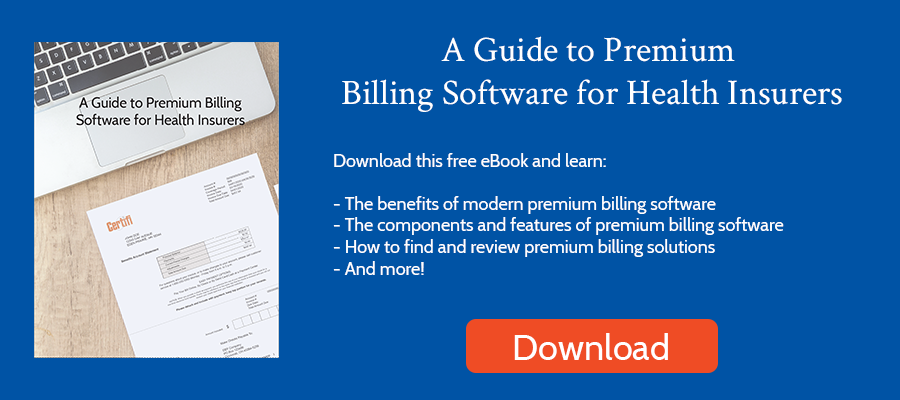The visual analytics company Tableau has a great study detailing how they used dashboards during the COVID-19 crisis to understand business performance and make better business decisions. The company leveraged data throughout the organization – in sales and marketing, finance, employee safety, and customer support – to understand business performance.
Dashboards take complex data and turn it into easily understood charts, graphs, and tables. That delivers actionable insight that can improve efficiency and productivity.
Here are six must-have premium billing dashboard metrics for health plans:
Billing Volume
What It Is
A billing volume metric shows the number of billing invoices generated and the dollar value of those invoices. You can group by product lines or markets, and timelining the data helps to see changes over time.
Why It Matters
You’ll be able to visualize spikes in invoice production or premium volume and better understand the scope and scale of each product line or market.
Percent of Subscribers/Groups with Recurring Payments
What It Is
Divide the total number of invoices by the number paid via a recurring payment method. Like volume, it’s good to visualize this data over time to see growth in auto payments.
Why It Matters
Recurring payments save you time and money. The easiest way to improve on-time premium payment rates is to encourage automatic payments. Tracking the number of recurring payments by product line delivers a visualization that helps determine if automatic payments are growing or declining. If your rate drops, consider a campaign with an incentive to improve automatic payment rates.
Refunds
What It Is
This metric tracks the number and dollar value of any refunds created within a specific period. Evaluating this data over time helps identify periods with refund spikes, which may indicate a data or technology issue.
Why It Matters
Processing many refunds can signify that your enrollment data, the billing process, or technology is underperforming. Often, refunds result from inaccurate data in the billing process. And often, correcting those data errors can take time. Your customer service team will likely respond to a customer request. Then your team must process the refund, which is often manual. More refunds equal more wasted time.
On-time Payment Rate
What It Is
As the name implies, this metric measures the percentage of invoices members or groups paid by their due date. Again, comparing data over time can help you understand baseline on-time payment rates and identify any anomalies, making it one of the most important premium billing dashboard metrics.
Why It Matters
Chasing late payments costs time and money. Generating, reviewing, and sending delinquency communications takes time. Reviewing this metric by product line may help you develop strategies to improve payment rates for individual products. For example, you may find that your low-premium Medicare Advantage plan has low on-time payment rates. Introducing a cash payment solution for Medicare Advantage plans may be convenient for seniors who frequently pay with cash.
Delinquency Events
What It Is
A measure of the number of delinquency events by product line over time.
Why It Matters
Understanding the volume of delinquency events created in a period helps quantify late payments and subsequent communication. Though it offers similar insight as the on-time payment rate, you can dig deeper with delinquency tracking. For example, a specific product or location may yield a high delinquency rate or increased late payments. As a result, you can plan targeted actions to alleviate those delinquencies.
Payment Methods
What It Is
Shows what percent of payments were made by each payment method, like ACH, Check, credit card, debit card, retail cash, etc.
Why It Matters
How members and groups pay can impact your bottom line. If you receive primarily checks and credit cards, you’re likely doing a lot more manual work processing those checks and losing money in credit card fees. You’re not maximizing your premium billing revenue. By understanding your payment mix, you can create targeted strategies to nudge members and groups to the payment methods that benefit you.
Certifi’s health insurance premium billing and payment solutions help healthcare payers improve member satisfaction while reducing administrative costs.



